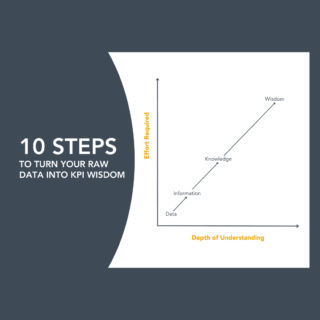If you have read KPI Paradigm Shift of PuMP #1, skip this intro and scroll down..If you haven’t, here is the link that introduces our 5-part blog series inspired by the Paper published by the United Nations Economic Commission for Europe; about how they used PuMP to measure the value of official statistics and the paradigm shifts they experienced while using the PuMP KPI approach.
Does your organization exist to simply get things done? Of course not!
So, why do so many of our workplaces fall into the habit of measuring actions which, in turn, drive us to measure trivial things? These trivial measures then distract our people’s focus from why our organization was created in the first place and minimizes the change needed to achieve a better future for our clients, customers, stakeholders, and employees. Measuring actions does not provide us with insights about how our organization is performing.
What we focus on creating, achieving, or improving is what we should measure.
Any organization can prove it gets things done, but great organizations can prove those actions had the intended impact.
Only measuring the Why (the impact or results we seek from our actions) will provide leaders and teams with insights that help them make decisions. It’s not about measuring what’s easy or traditional; it’s about measuring what matters most to improve.
When we monitor what needs improving and how much it is improving, without judgement, good performance measures give us feedback we can’t get any other way. The human brain is not so good at objectively assessing change over time, but quantified measures when done well, provide the feedback loop that links strategy with performance reporting and execution.
Tap into the power of measuring the Why of our actions, and employees will be more inspired to close the performance gaps of what matters most to your organization.
Wondering if your organization is stuck in using measurement to monitor activities rather the results? Look for these symptoms…
Symptom #1: Goals and objectives describe actions to be done, not results to be achieved.
You will recognize this symptom when leaders and teams create business goals that allude to what they want to get done but avoid what they want to achieve.
For example:
- Provide diversity training to our entire department.
- Transition to 100% digital documentation.
These types of goals will lead us to measure how much activity got done and discount the importance of Why we are doing it.
Symptom #2: Measures monitor what is done rather than the impact of what is done.
You will recognize this symptom when goals and strategies confuse project management milestones with performance measurement.
- For example: Develop a digital transformation strategy by November 15 of this year.
Project management’s role is tracking whether an activity was done on time and on budget; but only proper performance measurement provides us with the insights to know if the project had the intended impact on what matters most.
Symptom #3: Our KPIs count how many “things” get made or done.
You will recognize this symptom when KPIs and measures count how many “widgets” were made.
For example:
- # policies developed,
- # community events held,
- # employees trained, or
- # processes automated.
Quantity of stuff done is rarely evidence of whether all that work made any difference to what the organization intended to achieve when they set a goal in the first place.
If you are celebrating that you “hit” your target for “number of employees trained with the target of 15”, be careful what you are celebrating. Are any of those employees putting into practice what they learned? What purpose did you train them for?
Ready to shift the paradigm from monitoring actions to monitoring impact?
Use these Questions to Trigger Conversations and Inspire Change
Question #1: How do we currently know that our chosen actions were the right ones to take?
- Do we know how we made the decision to do a particular project or strategic initiative?
- How do we know if these chosen actions are aligned to what matters most in our strategy or business plan?
- Does it pass the “So What” test? So what if we trained 15 people? Why did we train them? What is the outcome we seek from this training?
Question #2: If we stopped doing our chosen actions, who would notice? Who would care?
- Do we notice that people are overly focused on meeting a deadline, rather than understanding why the action is important? And for whom it’s important?
- Do employees ever suggest alternative actions or stopping projects if the original one they set out to do doesn’t seem relevant or appropriate anymore?
Question #3: What “better future state” do we want our chosen actions to create in our organization?
- Do you think our people-leaders all tell the same strategy story about what we want to achieve and the improvement we seek?
- Do we notice that our teams’ time and budgets are being spent, but very little seems to improve or change?
- Does our reporting and communications seem to mainly focus on all the stuff done, and it seems hard to communicate if any real improvement was achieved?
Each of these questions is about trying to put a spotlight on how “leading with and measuring the Why” is what will ultimately inspire more change and improvement within our organizations, as teams learn how to choose and test better actions which close the performance gaps that matter most.
Where are you going to start?
Remember to be patient when helping people understand the difference between measuring and monitoring results vs actions, and the benefits that come from making this shift. A few examples can go a long way
__________________
Did you miss the previous blogs in this series:
- Get the Series full Context
- KPI Paradigm Shift #1: Use Measures to improve and learn, not to judge and blame
- Get the Series full Context
- KPI Paradigm Shift #3: Great measures come from evidence, not data.
- KPI Paradigm Shift #4: Team alignment to strategy comes from cause and effect thinking, not “mini-me” copy and paste.



